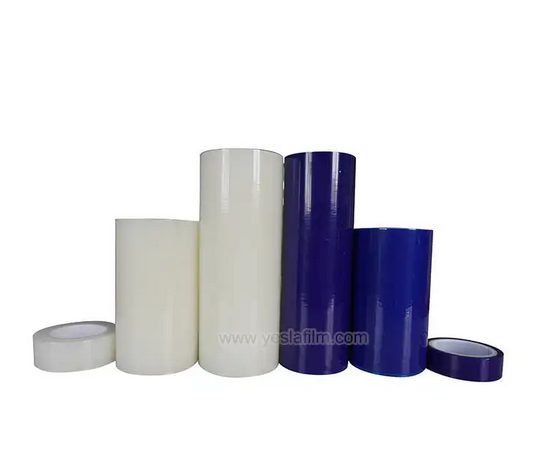Metal surfaces are widely used in various industries, from automotive and construction to electronics and manufacturing. While metal provides strength, durability, and aesthetic appeal, it is also prone to scratches, corrosion, and contamination during handling, transportation, and processing. Protective film for metal serves as a critical solution to safeguard surfaces, maintaining their integrity and quality.

What is Protective Film for Metal?
Protective film for metal is a temporary adhesive coating applied to metal surfaces to prevent damage. It is designed to shield against scratches, abrasions, dust, and chemical exposure. The film is easy to apply and remove without leaving any residue, ensuring that the metal remains in pristine condition.
Benefits of Using Protective Film for Metal
1. Prevention of Surface Damage
Metal surfaces are vulnerable to scratches and dents during manufacturing, transportation, and installation. A protective film acts as a barrier, ensuring that the metal remains flawless.
2. Resistance to Corrosion and Contamination
Environmental factors such as moisture, dust, and chemicals can lead to corrosion and staining. Protective films help mitigate these risks by keeping the metal surface isolated from harmful elements.
3. Ease of Application and Removal
Most protective films feature an adhesive backing that allows for quick application and easy removal without damaging the metal or leaving sticky residues.
4. Cost Efficiency
Repairing or refinishing damaged metal surfaces can be costly. By using a protective film, businesses can significantly reduce maintenance costs and product rejections.
5. Enhanced Aesthetic Appeal
For metals used in decorative or high-end applications, maintaining a flawless finish is essential. Protective films ensure that metals retain their original appearance until they reach the end user.
Types of Protective Film for Metal
1. Polyethylene (PE) Protective Film
One of the most common types, PE protective film is lightweight, flexible, and ideal for temporary surface protection. It is available in various thicknesses to suit different applications.
2. Polyvinyl Chloride (PVC) Protective Film
PVC films offer enhanced durability and are suitable for protecting metals in more demanding environments. They provide better resistance to chemicals and abrasion.
3. Polypropylene (PP) Protective Film
PP protective films are known for their strength and excellent transparency. They are often used for protecting metals that require high-clarity visibility.
4. Laser Protective Film
This specialized film is designed for metal surfaces subjected to laser cutting. It prevents burn marks and ensures a clean, high-quality cut.
Applications of Protective Film for Metal
- Stainless Steel – Used in kitchen appliances, elevators, and architectural elements, stainless steel requires protection to maintain its polished look.
- Aluminum – Common in construction and automotive industries, aluminum benefits from protective films to prevent scratches and oxidation.
- Copper and Brass – These metals are highly reactive to air and moisture. Protective films prevent tarnishing and discoloration.
- Galvanized Steel – Frequently used in roofing and industrial applications, protective films help prevent premature rusting and damage.
Choosing the Right Protective Film
When selecting a protective film for metal, consider factors such as:
- Adhesive Strength – Ensure the film adheres well without leaving residue.
- Thickness – Thicker films offer better protection but may be harder to remove.
- Environmental Resistance – If the metal will be exposed to extreme temperatures or chemicals, choose a film with high resistance properties.
- Application Method – Some films are applied manually, while others can be machine-applied for efficiency.
Protective film for metal is an essential tool for preserving the quality, appearance, and durability of metal surfaces. Whether in manufacturing, transportation, or final installation, using the right protective film minimizes risks, enhances efficiency, and reduces costs. By selecting the appropriate type and specifications, businesses can ensure that their metal products remain in optimal condition until they reach the end user.
